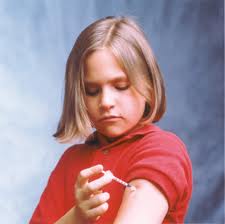A crash trolley or a code cart is a trolley which is nothing but an amalgamation of sets of trays or shelves which are used in the hospitals and medical facilities. These are to be kept and maintained as a set of life saving protocols that have to be used to potentially save the life of a person in emergency situations. The cart carries instruments for cardio pulmonary resuscitation. These crash and emergency trolleys are an asset in the hospital, as these enable the doctors and hospital staff to save the time that is usually consumed in providing a support litter to the patient.

The Importance of a Crash and Emergency Trolley
These crash and emergency trolleys are extremely important as these increase the chances of saving a person’s life. The hospitals used various intercom codes which are used for situations when someone has suffered a cardiac arrest or a fatal condition. Whenever any such announcements are made, the code blue is used and the hospital staff is required to stand in corridors and make way for such crash cart and emergency trolleys
Contents of The Crash and Emergency Trolley
The contents of the crash and emergency trolley vary from place to place and medical facility to medical facility. It is imperative that each hospital stocks up on the crash and emergency trolley and even though there are no regulatory schemes in this regard, yet it is needed for saving a person’s life. The contents that are mostly kept in such trolleys are as follows:
- Monitors that are standard equipment need to check the pulse rate, the blood pressure, the heart rate etc.
- Defibrillators
- Suction devices
- Bag valve masks of different sizes
- Drugs such as atropine, sodium – bicarbonate, dopamine and vasopressin are essential for providing cardiovascular support in the case of emergencies.
- Drugs for peripheral access
- Drugs for central venous access
- Drugs that are used for rapid sequencing
- Pediatric equipment of all kids that are essential for cardiac distress and other forms of emergency situations.
- Other drugs and equipment as chosen by the facility depending on the mode of occurrence and the frequency of occurrence.
- Drugs for treatment of common problems such as dextrose, diazepam, or midazolam etc. amongst many others essential for medical contingencies.

Tips on How to Maintain the Crash and Emergency Trolleys
These are extremely important trolleys and hence it must be checked from time to time. Medicines are subject to expiry from time to time and it is only natural that these be checked for any irregularities. The checks should be conducted more like an audit and recorded so that mistakes and negligence do not take place in critical situations.
- Emergency / Crash trolleys should be checked for medicines. The presence of all the medicines. Anything which is not in stock should be added, any medicine that is come down to the reorder level should be ordered immediately.
- Expiry of medicines as said earlier is imperative and should be checked and replaced with in use ones.
- The equipment such as the monitors need to be check from time to time
- The cart pads should be checked for the medical equipment
- The pediatric kit should be subject to regular checks and so do the equipment pertaining to the same purpose
- Mostly these trolleys cater to the cardiac situations and resuscitation. Hence, the equipment, sedatives and all other kit and medicines should be evaluated periodically lest any mistake happens in a crucial time. It is preferred to take a rain check from time to time regarding the all-pervasive and important trolleys.

